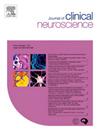Socioeconomic correlates of decompressive craniectomy outcomes for pediatric traumatic brain injury: a meta-epidemiological study
IF 1.8
4区 医学
Q3 CLINICAL NEUROLOGY
引用次数: 0
Abstract
Introduction
Low- and middle-income countries experience high pediatric traumatic brain injury rates. A decompressive craniectomy (DC) is a viable option for patients who are unresponsive to medical management. In 2019, the AANS Joint Section for Neurotrauma developed guidelines for pediatric TBI; however, the literature regarding socioeconomic factors that influence the success rate of DC in resource-poor environments remains sparse. Identification of these barriers is important to modify appropriate guidelines for these communities.
Methods
A PRISMA-adherent systematic review of four databases was performed to identify all primary articles investigating outcomes following DC in pediatric patients. Data were extracted for study features and primary outcomes including mortality and postoperative functional status. Socioeconomic epidemiological metrics, including poverty, population density, and health outcomes, were obtained from the United Nations and World Bank. A multivariable meta-regression analysis was performed to evaluate epidemiological factors influencing the pooled mortality and GOS estimates.
Results
Data from 39 studies, spanning 17 unique countries were abstracted. The mean age of patients in LMIC undergoing DC was younger, mean 4.74 (sD = 2.76) vs. mean 9.37 (sD = 3.52). Factors correlated with mortality rate included Human Development Index (HDI) (B (SE) = −2.33 (1.02), p = 0.022), population density (0.798 (0.188), p < 0.001), percent of urban population (−0.02 (0.007), p = 0.006), percent of underweight population under 5 years of age (0.028 (0.011), p = 0.010), school enrollment (−0.018 (0.006), p = 0.006), LMIC status (0.83 (0.323), p = 0.010), and the number of hospital beds (−0.12 (0.039), p = 0.002). Post-operative GOS was not associated with any epidemiological covariates.
Conclusion
Socioeconomic determinants predict the success rate of DC in pediatric traumatic brain injury. Population density and the number of hospital beds having the strongest correlation to mortality rate indicate that low-resource, high-volume communities suffer from worse outcomes post-DC.
儿童创伤性脑损伤减压颅骨切除术结果的社会经济相关性:一项荟萃流行病学研究
低收入和中等收入国家的儿童创伤性脑损伤发生率很高。减压颅骨切除术(DC)是一个可行的选择,谁是对医疗管理无反应的患者。2019年,AANS神经创伤联合科制定了儿科TBI指南;然而,关于影响资源贫乏环境下DC成功率的社会经济因素的文献仍然很少。识别这些障碍对于为这些社区修改适当的指导方针非常重要。方法对四个数据库进行系统评价,以确定调查儿科患者DC后结局的所有主要文章。提取研究特征和主要结局的数据,包括死亡率和术后功能状态。从联合国和世界银行获得了社会经济流行病学指标,包括贫困、人口密度和健康结果。采用多变量meta回归分析评估影响合并死亡率和GOS估计值的流行病学因素。结果来自17个不同国家的39项研究的数据被摘要。LMIC患者接受DC的平均年龄更年轻,平均4.74岁(sD = 2.76) vs.平均9.37岁(sD = 3.52)。与死亡率相关的因素包括人类发展指数(HDI) (B (SE) = - 2.33 (1.02), p = 0.022)、人口密度(0.798 (0.188),p <;城市人口百分比(- 0.02 (0.007),p = 0.006), 5岁以下体重不足人口百分比(0.028 (0.011),p = 0.010),入学率(- 0.018 (0.006),p = 0.006),低收入人群状况(0.83 (0.323),p = 0.010),医院床位数(- 0.12 (0.039),p = 0.002)。术后GOS与任何流行病学协变量无关。结论社会经济因素可预测儿童外伤性脑损伤DC的成功率。人口密度和医院床位数量与死亡率的相关性最强,这表明资源少、人口多的社区在dc后的预后更差。
本文章由计算机程序翻译,如有差异,请以英文原文为准。
求助全文
约1分钟内获得全文
求助全文
来源期刊

Journal of Clinical Neuroscience
医学-临床神经学
CiteScore
4.50
自引率
0.00%
发文量
402
审稿时长
40 days
期刊介绍:
This International journal, Journal of Clinical Neuroscience, publishes articles on clinical neurosurgery and neurology and the related neurosciences such as neuro-pathology, neuro-radiology, neuro-ophthalmology and neuro-physiology.
The journal has a broad International perspective, and emphasises the advances occurring in Asia, the Pacific Rim region, Europe and North America. The Journal acts as a focus for publication of major clinical and laboratory research, as well as publishing solicited manuscripts on specific subjects from experts, case reports and other information of interest to clinicians working in the clinical neurosciences.
 求助内容:
求助内容: 应助结果提醒方式:
应助结果提醒方式:


